Thursday, June 10th 2010

Intel Sandy Bridge Quad-Core Processor Tested
At this year's Computex event, some of the most unexpected exhibits were socket LGA1155 motherboards based on Intel 6-series chipsets, across the board, from virtually every major motherboard vendor. Unexpected, because it's been less than an year since released mainstream derivatives of the Nehalem/Westmere architectures that use the LGA1156 socket. LGA1155 will form the base for performance, mainstream, and value segments of processors based on the upcoming Sandy Bridge architecture, which is a generation successor of Nehalem. With so many motherboard vendors showing off their creations in release-grade conditions, it is obvious that engineering samples of processors to go with them are already on the loose and will land in some enthusiast's hands. It did, in the skillful hands of Coolaler, who wasted no time in putting it through a quick run through popular benchmarks.
Coolaler tested an LGA1155 quad-core processor operating at 2.5 GHz, which CPU-Z can't name but marks it as a Sandy Bridge engineering sample. Among the little that's known about this processor, is that it has a base clock speed of 100 MHz (Nehalem/Westmere processors use BClk of 133 MHz), which means that to achieve 2.5 GHz, it uses a multiplier value of 25. It has all the instruction sets of Westmere including SSE 4.2 and AES acceleration, but also features AVX (Advanced Vector Extensions), a successor to SSE 4.2 which expands the processor's number crunching abilities, and increases performance per MHz. The cache structure up to the second level is the same (32 KB L1I, 32 KB L1D, 256 KB /core L2), but uses a smaller L3 cache at 6 MB (compared to 8 MB on Lynnfield). HyperThreading technology provides the OS with 8 logical CPUs to deal with.The setup was aided with 4 GB of DDR3 memory and ATI Radeon HD 5800 series graphics. The processor crunched Super Pi 1M in 16.349 s, it scored 371 points in CPU Mark. In the multi-threaded Cinebench R11.5 benchmark, the 2.5 GHz chip scored a little under Core i7 860 (reference score). In the Everest CPU Queen, it's about as fast a Core i5 750 from what we could say, but in the Photoworxx test, it outperformed the Core i7 965 XE. In a separate set of tests run on the same hardware albeit in Windows XP, the processor was eight times faster than any other processor in the AES test (because of its native AES extensions), and edged the Core i7 965 XE in memory bandwidth despite having a narrower dual-channel DDR3 IMC.While the results don't show a revolutionary processor, it is intended to be one. Right now it's eligible for the benefit of doubt. The real benefits will be for those models which come with embedded graphics, since the IGP and memory controller will be present on the same die, instead of the present design where the package is an MCM for two dies: CPU and northbridge. When Sandy Bridge releases is a subject of immense speculation. Since motherboard makers unveiled such mature designs of LGA1155 motherboards as early as in June 2010, a market release of the platform may not be too far away.
Source:
Coolaler Forums
Coolaler tested an LGA1155 quad-core processor operating at 2.5 GHz, which CPU-Z can't name but marks it as a Sandy Bridge engineering sample. Among the little that's known about this processor, is that it has a base clock speed of 100 MHz (Nehalem/Westmere processors use BClk of 133 MHz), which means that to achieve 2.5 GHz, it uses a multiplier value of 25. It has all the instruction sets of Westmere including SSE 4.2 and AES acceleration, but also features AVX (Advanced Vector Extensions), a successor to SSE 4.2 which expands the processor's number crunching abilities, and increases performance per MHz. The cache structure up to the second level is the same (32 KB L1I, 32 KB L1D, 256 KB /core L2), but uses a smaller L3 cache at 6 MB (compared to 8 MB on Lynnfield). HyperThreading technology provides the OS with 8 logical CPUs to deal with.The setup was aided with 4 GB of DDR3 memory and ATI Radeon HD 5800 series graphics. The processor crunched Super Pi 1M in 16.349 s, it scored 371 points in CPU Mark. In the multi-threaded Cinebench R11.5 benchmark, the 2.5 GHz chip scored a little under Core i7 860 (reference score). In the Everest CPU Queen, it's about as fast a Core i5 750 from what we could say, but in the Photoworxx test, it outperformed the Core i7 965 XE. In a separate set of tests run on the same hardware albeit in Windows XP, the processor was eight times faster than any other processor in the AES test (because of its native AES extensions), and edged the Core i7 965 XE in memory bandwidth despite having a narrower dual-channel DDR3 IMC.While the results don't show a revolutionary processor, it is intended to be one. Right now it's eligible for the benefit of doubt. The real benefits will be for those models which come with embedded graphics, since the IGP and memory controller will be present on the same die, instead of the present design where the package is an MCM for two dies: CPU and northbridge. When Sandy Bridge releases is a subject of immense speculation. Since motherboard makers unveiled such mature designs of LGA1155 motherboards as early as in June 2010, a market release of the platform may not be too far away.
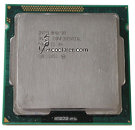
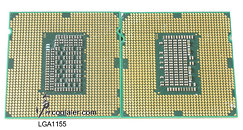
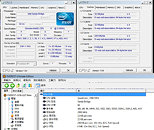
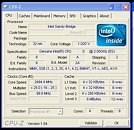
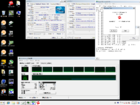
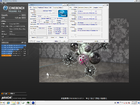
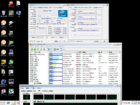
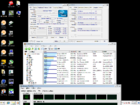
72 Comments on Intel Sandy Bridge Quad-Core Processor Tested
"it has our IGP built right in!"
*pattering of feet* **DOOR SLAM**
No skin off my back though, I'll take advantage of the great 1156 deals as it goes out, like the 875K.Yep, that is exactly why I'm still running 775, because it more than meets my needs, I'll be taking advantage of the deals on 1156 stuff though.
Red (1) was removed, and black (2) were moved.
AVX or should i say AltiVec that was only 128bit SSE.
Now that 1156 has integrated graphics, I don't see any good reason why 1155 is necessary.
I do welcome the integration of SATA 3, and hopefully all these boards have USB3 as well, but while I agree it is slightly upsetting that there is a new socket, I see their reasoning.
These processors operate on a completely different bclk. They wouldn't want anybody trying to put a 133bclk CPU into a 100bclk motherboard, or vice versa.
Or maybe they're just a big, money hungry company that wants us all to buy new boards. :)